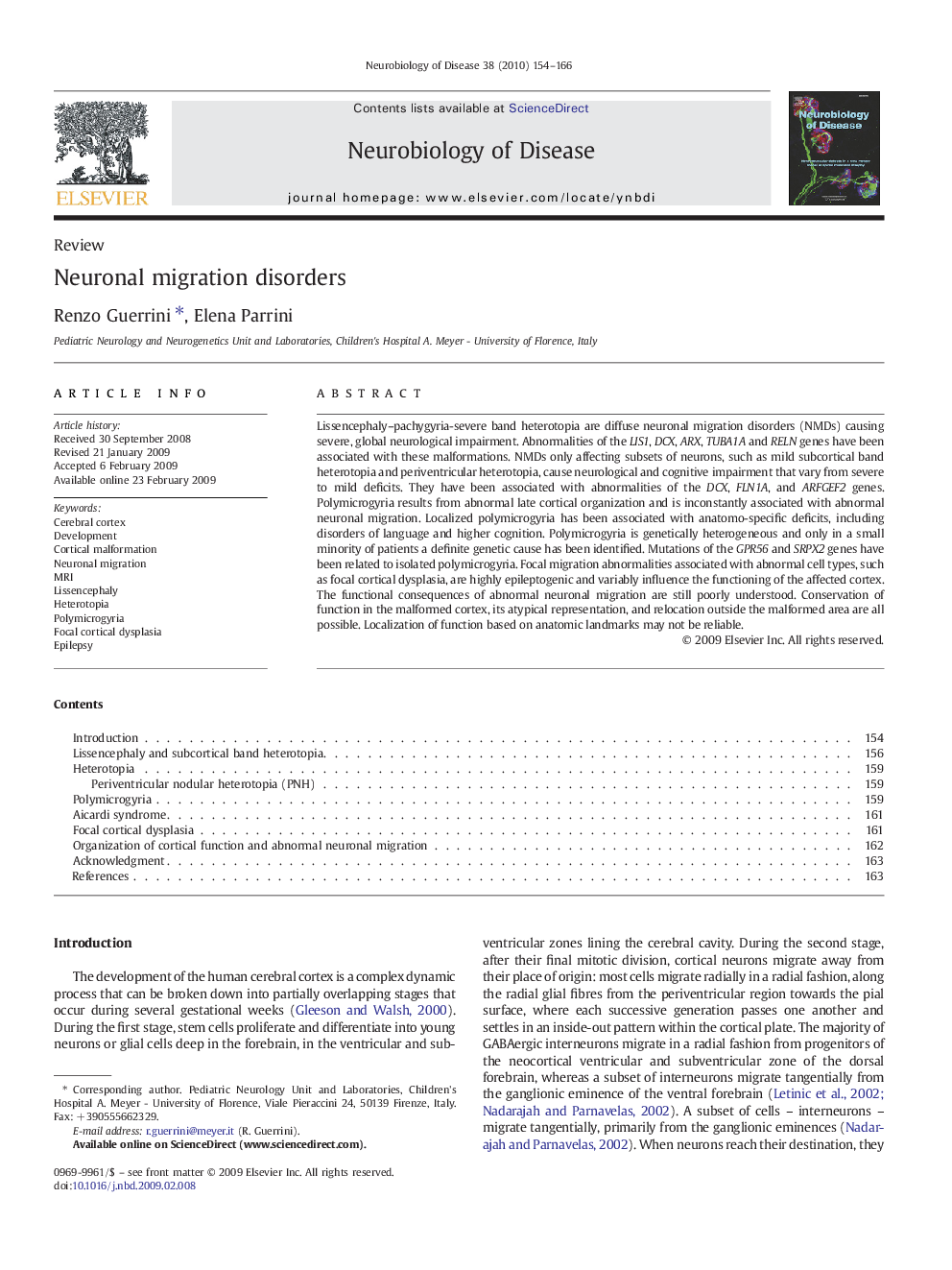| Article ID | Journal | Published Year | Pages | File Type |
|---|---|---|---|---|
| 3069869 | Neurobiology of Disease | 2010 | 13 Pages |
Lissencephaly–pachygyria-severe band heterotopia are diffuse neuronal migration disorders (NMDs) causing severe, global neurological impairment. Abnormalities of the LIS1, DCX, ARX, TUBA1A and RELN genes have been associated with these malformations. NMDs only affecting subsets of neurons, such as mild subcortical band heterotopia and periventricular heterotopia, cause neurological and cognitive impairment that vary from severe to mild deficits. They have been associated with abnormalities of the DCX, FLN1A, and ARFGEF2 genes. Polymicrogyria results from abnormal late cortical organization and is inconstantly associated with abnormal neuronal migration. Localized polymicrogyria has been associated with anatomo-specific deficits, including disorders of language and higher cognition. Polymicrogyria is genetically heterogeneous and only in a small minority of patients a definite genetic cause has been identified. Mutations of the GPR56 and SRPX2 genes have been related to isolated polymicrogyria. Focal migration abnormalities associated with abnormal cell types, such as focal cortical dysplasia, are highly epileptogenic and variably influence the functioning of the affected cortex.The functional consequences of abnormal neuronal migration are still poorly understood. Conservation of function in the malformed cortex, its atypical representation, and relocation outside the malformed area are all possible. Localization of function based on anatomic landmarks may not be reliable.
